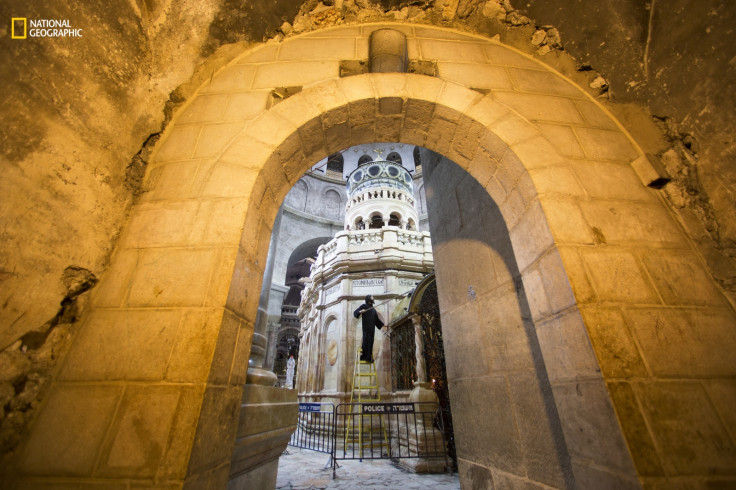Excavations reveal 'Tomb of Christ' in Jerusalem is at risk of collapse
The foundations underneath the tomb are crumbling and sit on top of centuries of rubble.
Scientists say that there is a "very real risk" of collapse of the site thought to be the tomb of Jesus Christ at the Church of the Holy Sepulchre, Jerusalem.
"When it fails, the failure will not be a slow process, but catastrophic," Antonia Moropoulou of National Technical University of Athens, chief scientific supervisor of the excavations told National Geographic.
The site has been undergoing restoration that started in 2016, first exposing the tomb in October. Additional restoration is necessary to prevent the collapse of the structure, the scientists say.
The risk is because the tomb and its surrounding rotunda is built on unstable foundations made up of centuries of rubble from destroyed temples and other structures at the site. They were constructed on top of a honeycomb structure of tunnels and channels. The pillars that hold up the rotunda each weigh about 22 tonnes.
About 2,000 years ago the site was an old limestone quarry. A Roman temple was built in the 2nd Century CE, which was later destroyed by the Emperor Constantine, revealing what is now traditionally thought to be the tomb of Christ.
The structure that Constantine erected was partially destroyed centuries later, and then restored in the 16th Century and again in the 19th Century.
The result is that the present tomb sits on unstable ground made up of the remains of several destroyed buildings. Analysis using ground-penetrating radar and robotic cameras revealed the nature of the rubble underneath the tomb. The original limestone quarry also had steeply sloping sides, on which some of the present-day building rests.
Drainage channels beneath the rotunda have also exposed the foundations of the building to damp, making them begin to crumble. A network of tunnels of unknown origin also runs directly underneath the tomb.
The scientists restoring the Edicule – the covering that protects the tomb itself – say that the area below the tomb may be opened up to remove and replace the crumbling stone underneath. This would take about 10 months and cost about €6 million (£5.2m).
It raises the possibility for archaeological research at the site as well as extensive restoration to protect the future of the tomb.
"This work is a collective work," said Moropoulou. "It doesn't belong to us, it belongs to all humanity."

© Copyright IBTimes 2025. All rights reserved.






















